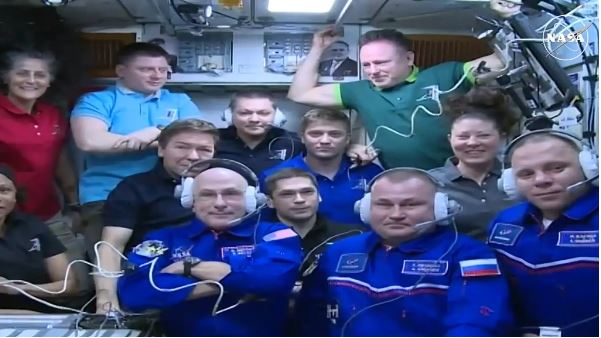Nineteen astronauts are currently orbiting Earth, marking a record for the most people in space at the same time. Among these are NASA astronauts Suni Williams and Butch Wilmore, whose unexpected extended stay on the International Space Station (ISS) stems from complications with Boeing’s Starliner spacecraft. Despite the unexpected changes, both astronauts expressed unwavering support for NASA and Boeing, indicating no disappointment with the adjustments in their mission schedule.
The two astronauts were launched into space in June as part of Boeing’s Starliner test flight. The mission was designed to be a critical step in NASA’s plan to have multiple commercial spacecraft ferry astronauts to and from the ISS. Boeing’s Starliner faced numerous technical issues in the lead-up to this mission, including software problems, parachute malfunctions, and helium leaks in its propulsion system. During this test flight, another helium leak occurred after the spacecraft reached orbit.
After evaluating the spacecraft’s condition, NASA opted to send Starliner back to Earth without any crew aboard. Williams and Wilmore watched from the ISS as the spacecraft returned uncrewed to Earth in August. “I was so happy it got home,” said Williams, expressing relief rather than disappointment at the successful landing in New Mexico.
NASA’s decision to return the spacecraft uncrewed extended the two astronauts’ stay on the ISS until February, when they are now expected to return aboard a SpaceX Crew Dragon. By the end of their mission, Williams and Wilmore will have spent approximately eight months in space. However, NASA emphasized that the astronauts were not “stranded” on the station but had simply adjusted to the changing mission timeline.
Both astronauts spoke about the personal sacrifices this extended mission has required. Williams, originally from Massachusetts, said she would miss the fall apple-picking season and the vibrant autumn colors back home, though she hopes to capture some of the scenery from space. Wilmore, a father of two, will miss significant milestones in his daughters’ lives, including his younger daughter’s senior year of high school and his elder daughter’s sophomore year in college.
Despite these personal challenges, neither astronaut expressed regret or disappointment about their extended stay. The duo’s positive attitude mirrors that of NASA astronaut Frank Rubio, whose mission aboard the ISS was also unexpectedly extended. In Rubio’s case, a Russian Soyuz spacecraft suffered a radiator leak, rendering it unsafe for the return journey. After months of analysis, engineers concluded the spacecraft wasn’t fit to carry astronauts home, prompting Russia to send a replacement Soyuz to retrieve Rubio and his two Russian counterparts.
Rubio’s initial six-month mission was extended to over a year, and he now holds the record for the longest continuous stay in space by an American astronaut, totaling 371 days. Reflecting on the experience, Rubio shared, “It’s certainly a challenge. You’re missing six extra months of events — birthdays, anniversaries, or just special moments.” Still, Rubio spoke positively of Williams and Wilmore’s ability to maintain morale, noting that they exhibit the same dedication and focus on the mission that helped him endure his extended time in space.
In the meantime, Williams and Wilmore are settling into their prolonged mission. Both are seasoned space travelers, having spent time aboard the ISS in previous missions. Their daily routine includes exercise to counteract the physical effects of living in space, and they’ve assumed additional duties as full members of the ISS crew. Williams is keeping a weekly journal, which she sends home to loved ones as a way to stay connected during her extended time in space.
For Williams, the experience has offered moments of reflection. She shared her hope that the unity found in space could serve as a model for people back on Earth. “It’s the one planet we have, and we should all really be happy that we’re there together because that’s it. That’s our place,” she said.
As NASA and Boeing continue to address the Starliner’s technical issues, Williams and Wilmore’s extended stay is seen as a testament to the resilience and adaptability of astronauts in challenging situations. Both remain focused on the mission, maintaining the positivity needed to see their journey through to its eventual conclusion.

